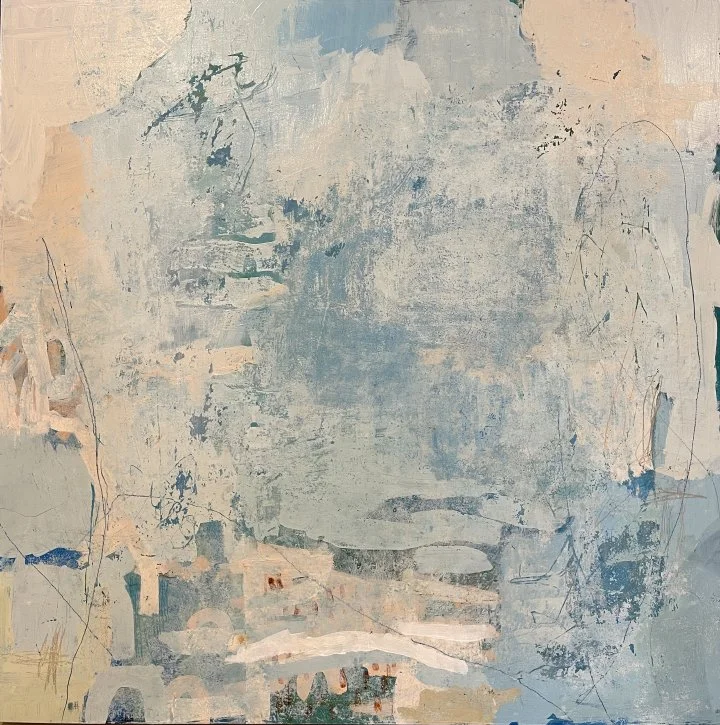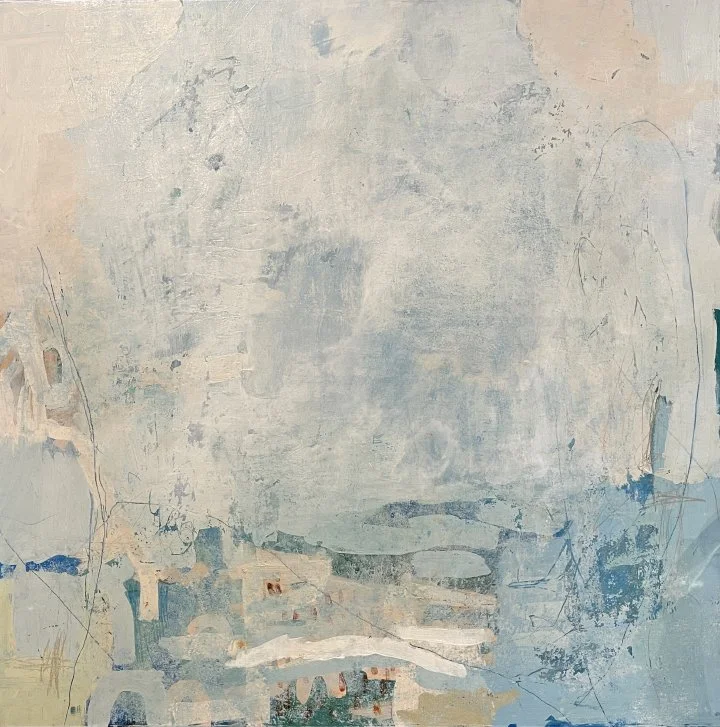A complete change of direction...and that is Okay!
Late December, I was working on an abstract painting and I was having a lot of trouble with it. I suspect the trouble was because I was working on wood, and I had not used a wood panel in a long time. The wood panel (in the early layers) feels much different under the paint compared to a canvas painting, and sometimes I get stuck.
The early stages of an abstract painting.
I LOVE working with a wood panel. I totally love it. I love it so much because I like the texture I am able to create when using wood. You can see in this painting (above) I was painting in my usual canvas style instead of turning into “texture mode”. This was clearly not working with me.
A lot of my students, when they are this frustrated, gesso and cover the entire painting to begin again. I understand that there is value in a painting like this, and did not want the entire piece covered. Anyone can gain a lot of valuable experience from turning something you don’t like into a painting that you love. I am happy to help each of my online workshop students accomplish this and I encourage everyone to email or post their work when they are having trouble. Sometimes just that one sentence or phrase can make a big difference in your future paintings!
Getting frustrated and adding in some movement and texture.
I went back to my swatch of colors and checked over the paint samples that I had mixed when I started this piece. The lighter colors called to me this day and the texture vision was starting to click. The process was over a 12 day period. During the warmer months, I think this would have been a week-long painting, but when you are working with heavy paint layers in the winter, things dry very slowly. I take many breaks during the process for this reason as well as letting my mental state recover!
Pale blues, pink and warm whites added to the wood panel.
If you scroll back up to the blue painting we started with here, you can see that I used those color blocks to add in the new palette. The palette I am using on this new lighter piece was created with all the same paint I used in the beginning of this piece. I was having trouble at the beginning with the composition, but I know I would not have an issue with color harmony added to the frustration if I stuck to the “Expanding on Color” workshop principles. Heavy paint and wood allows me to scratch and age the painting easier than if I were to be working on canvas.
The painting is almost complete in this photo.
I landed with this composition and in the photo above, I am almost finished, but the composition is not as complex and “finished” as I like it to be. Patience with glazing and fine tuning come into play now in order to arrive at the final version of the painting.
As the painting stood, the large amount of texture and scratching detracted from the overall composition. The piece was too busy and it looked sloppy. The final stages I use are for adding complexity and refinement. The smooth layers guide the eye around the composition and allow it to rest in some areas, while calling attention to other areas in the painting.
The reason I take so much time in the finishing process of my paintings is that I try very hard to make them appear that they are not easily created. Notice the slight color shift of blue in the light portion and the smoothing of the elements in the lower portion. I feel that this painting is a minimalist abstract, but the added extra finishing touches make it much more complex.
For information on my online workshops, which include the techniques as well as daily personalized coaching, please follow this link.




